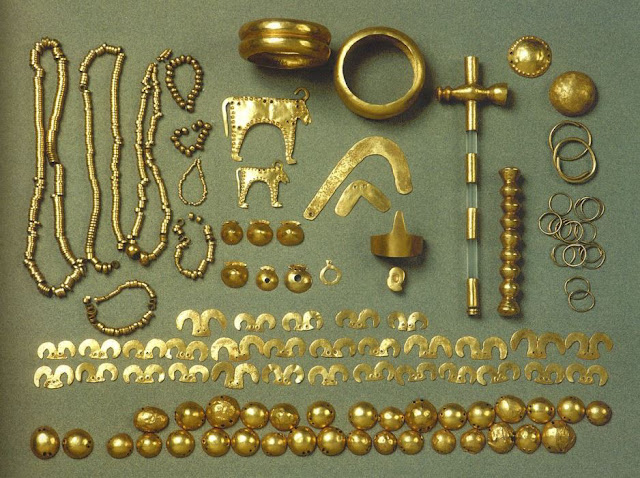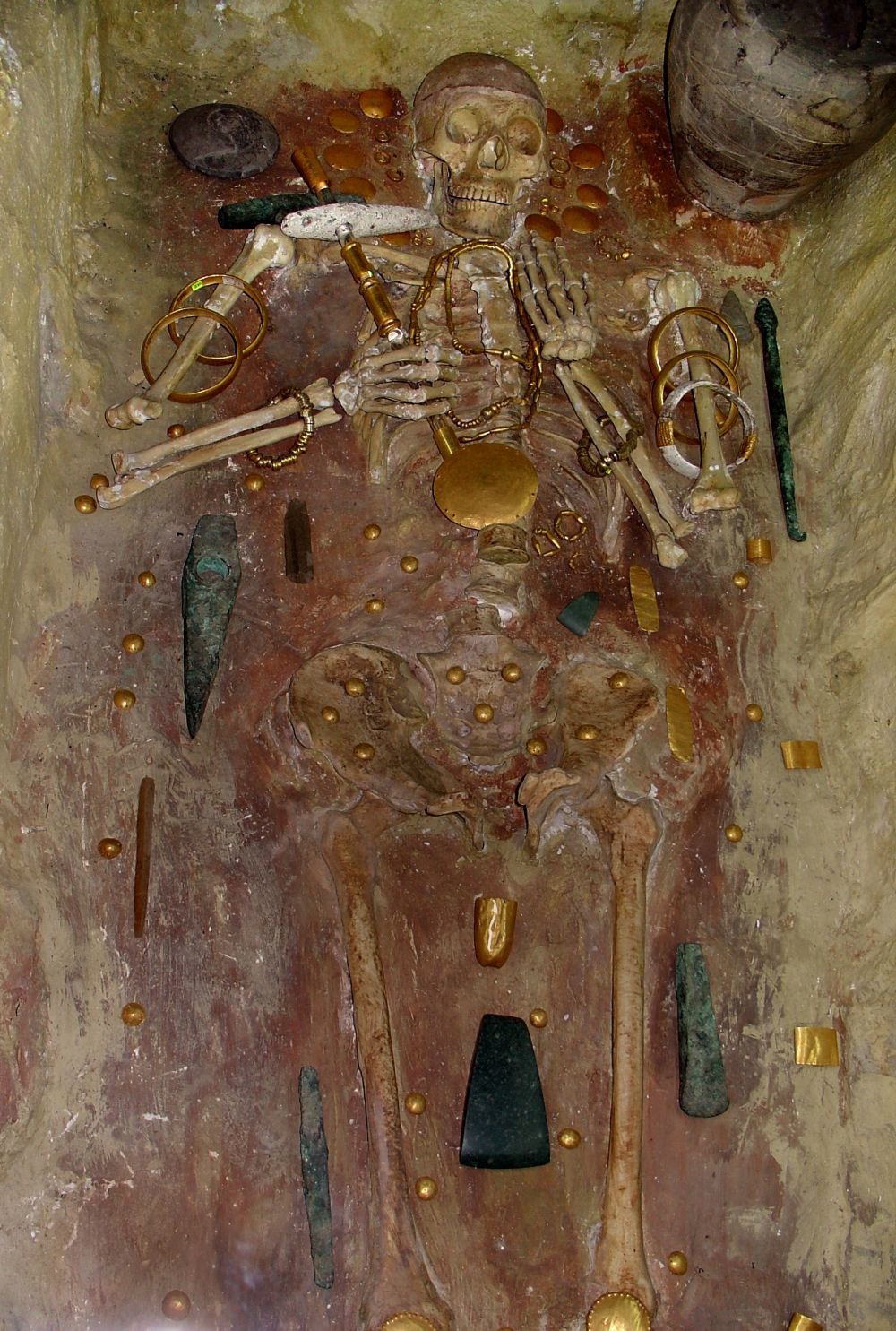The necropolis in Varna, a cemetery dating back to 4,660–4,450 BC on the Bulgarian Black Sea coast, is home to the oldest gold objects known to exist. This significant site, also known as the Varna Cemetery, is located in the western industrial zone of Varna and is one of the most important prehistoric archaeological sites globally.

Historical Significance
The Varna Culture
The necropolis is a product of the Varna culture’s Chalcolithic (copper phase), which lasted between 6,000 and 6,500 years ago. This culture is a vital part of ancient European human civilization, which first emerged in modern-day Bulgaria, the Balkans, the Lower Danube, and the west coast of the Black Sea. Some scholars refer to this ancient civilization as “Old Europe.”

Discoveries in the Necropolis
According to the Archaeology of Bulgaria, 294 tombs containing around 3,000 gold artifacts have been found in the Varna necropolis. Among these, Tomb 43 stands out. Archaeologists discovered the skeletal remains of a tall man, believed to be a monarch or leader, alongside a substantial amount of gold treasures.
The excavation and unexpected discovery

The golden treasure in Varna was discovered in 1972 when a 22-year-old excavator operator named Raycho Marinov unintentionally unearthed several artifacts while preparing the area for a tin factory. Marinov took these artifacts home but soon decided to contact local archaeologists to report his find.
The subsequent excavation revealed 294 Chalcolithic graves. Radiocarbon dating places the tombs and the golden artifacts between 4,560 and 4,450 BC. The artifacts, weighing a combined 6.5 kg, are classified into 28 different varieties. Notably, Tomb 43 contained more than 1.5 kg of gold, including items such as a stone ax, a copper ax with gold accents, rings, necklaces, chains, and other gold decorations.
Cultural and Economic Insights

Discoveries from the necropolis suggest that Varna’s culture had commercial links with distant regions of the Black Sea and Mediterranean. Rock salt was shipped from Provadiya-Solnitsata (“Salt Well”), and seashells from the Mediterranean mollusk Spondyla, found in the tombs, were likely used as currency.
Archaeologists believe that the Balkan Peninsula (southeastern Europe) had forms of state and royal institutions since the Copper Age, as evidenced by the significant amounts of gold in some tombs. The gold artifacts discovered were once considered royal emblems.
Notable Tombs
Tomb 43

In tomb 43, archaeologists unearthed the remains of a prestigious male figure who seems to have held significant leadership or royal status. The amount of gold discovered within this burial surpasses the combined total found elsewhere in the world during that era. This remarkable find provides a rare glimpse into the wealth and authority wielded by ancient rulers, shedding new light on their influence and societal significance.
Located in the central section of the necropolis, is one of the most intriguing. The skeleton, estimated to be between 1.70 and 1.75 meters tall, was surrounded by over 1.5 kg of gold, suggesting the individual was a prominent figure, likely a king or monarch.
Tomb 36
Another significant find was Tomb 36, a symbolic tomb containing over 850 gold artifacts, including a tiara, earrings, necklace, belt, bracelet, breastplate, and a gold scepter with a hammer. The artifacts were wrapped in a gold cloth outlining a human torso, indicating a male burial mound.

The excavations are still ongoing
Only about 30% of the necropolis’s rough terrain has been excavated, suggesting that more discoveries await. The necropolis of Varna remains a crucial site for understanding ancient European civilization and its cultural, economic, and social complexities.
